Occupancy Monitoring Technology
If you are looking for an occupancy sensor or system for your organization for resource allocation and facilities management to control lighting, heating, ventilation, and air conditioning (HVAC) systems, reducing energy waste, you’ve arrived at the right place.
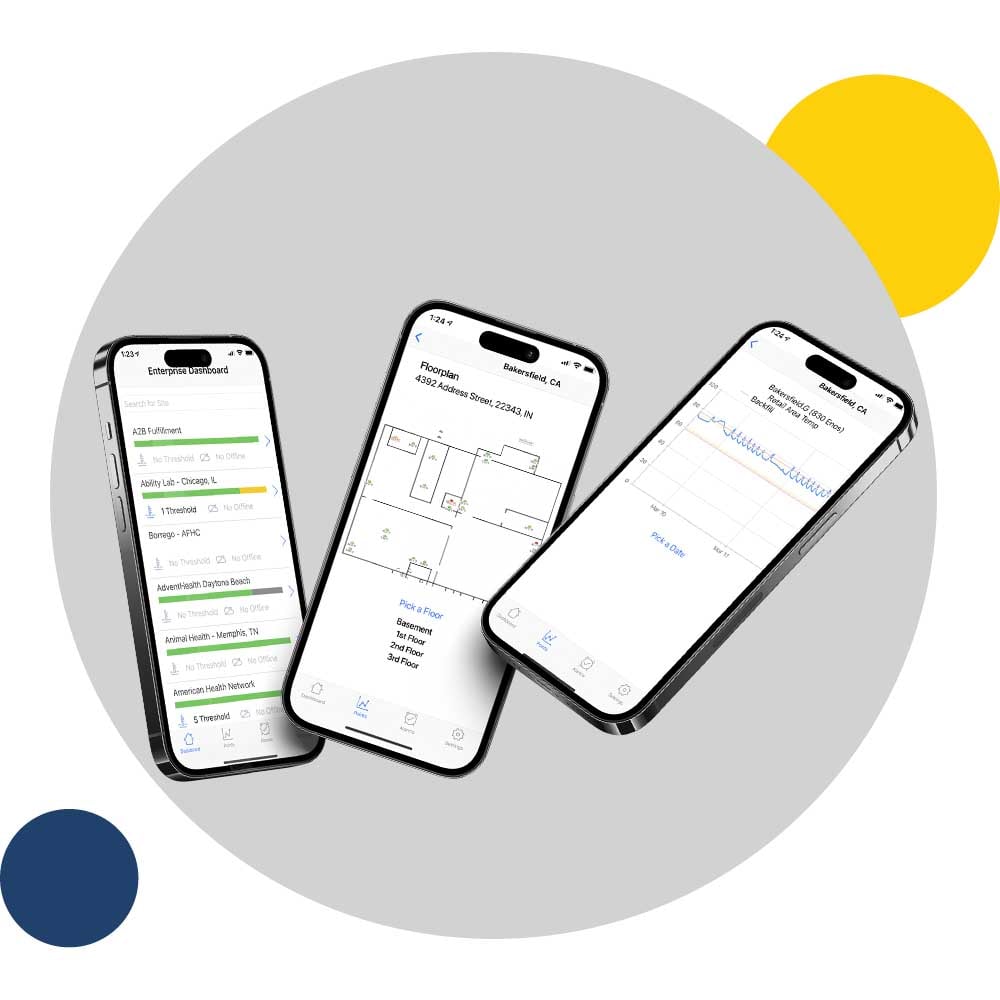
Let us help you evaluate your needs!
- Safety: Alerts via text, email, push notifications and phone calls to protect your precious assets
- Compliance: Automated compliance reports
- Efficiency: Reduced Manual Logging and time spent on reports
And what makes us different?
- Lifetime Warranty: Never buy hardware again!
- Unlimited Users: Scale across your entire organization
- Connectivity Flexibility: Wi-Fi, Cellular or Data Hub
- Phone call alarms: Alerts won't get ignored
- Mobile App: 500 Freezers in your pocket
- Facility monitoring: Simple to add water leak, door open, occupancy, and even IAQ monitoring
Engineered in Indiana with U.S.-based support.
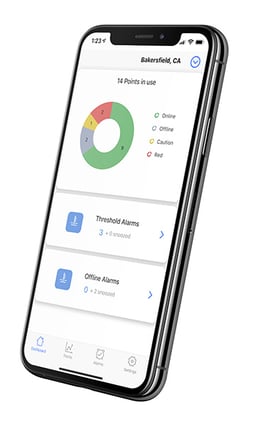
Make NIST Compliance a "SNAP"
Sonicu’s SNAP Calibration program provides an easy &cost effective way to maintain regulatory compliancewithout the hassle of conventional recalibration
SNAP Compliance Sheet
See What Customers Say About Sonicu
Asset Protection. Compliance Automation. And Reduced Manual Processes.
Sonicu serves thousands of professionals at hundreds of organizations across North America by improving how they monitor and manage their most sensitive assets and environments.
Professionals from healthcare, life science, laboratory and cold chain facility management turn to Sonicu to help them improve the way they do business.
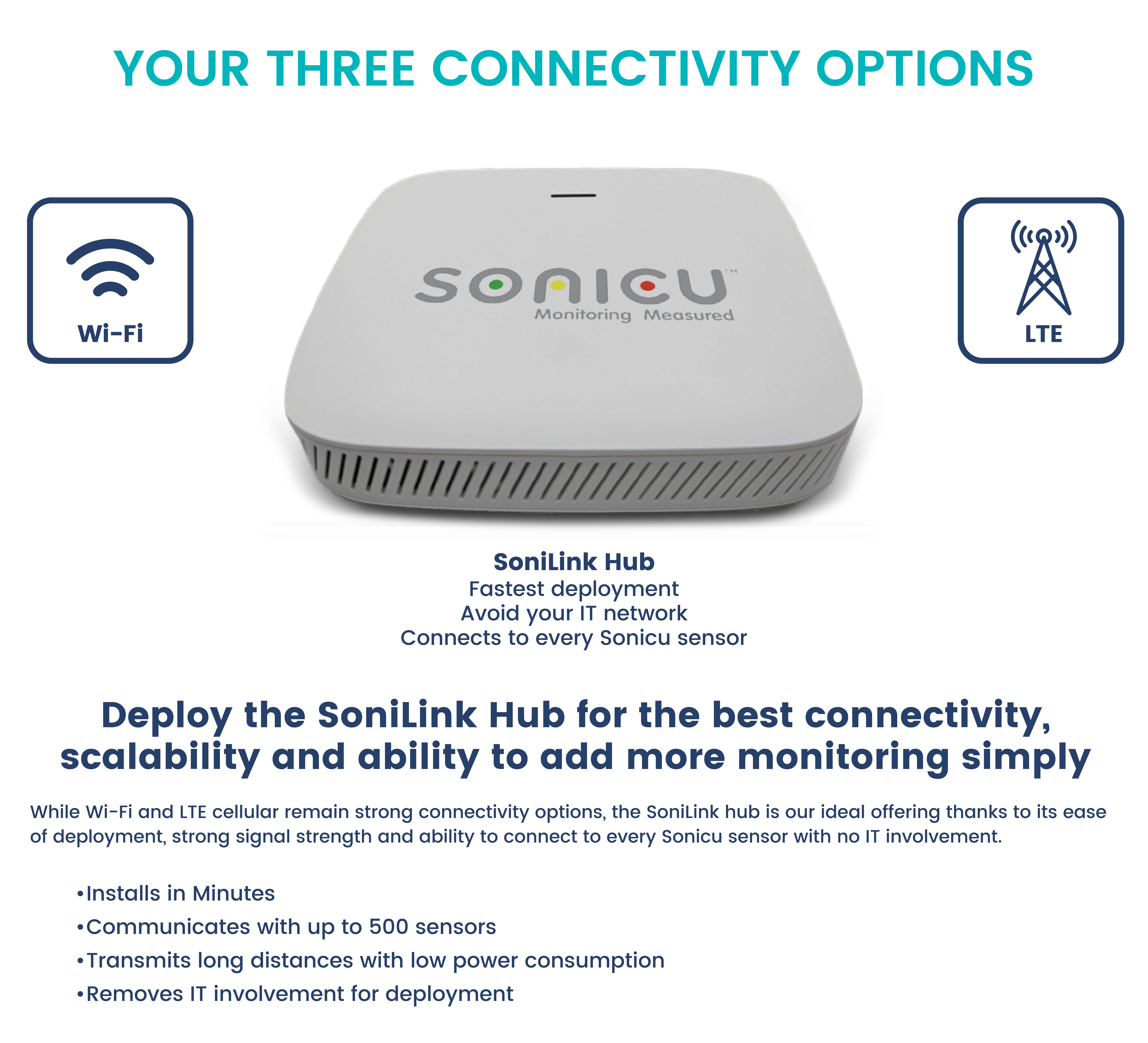
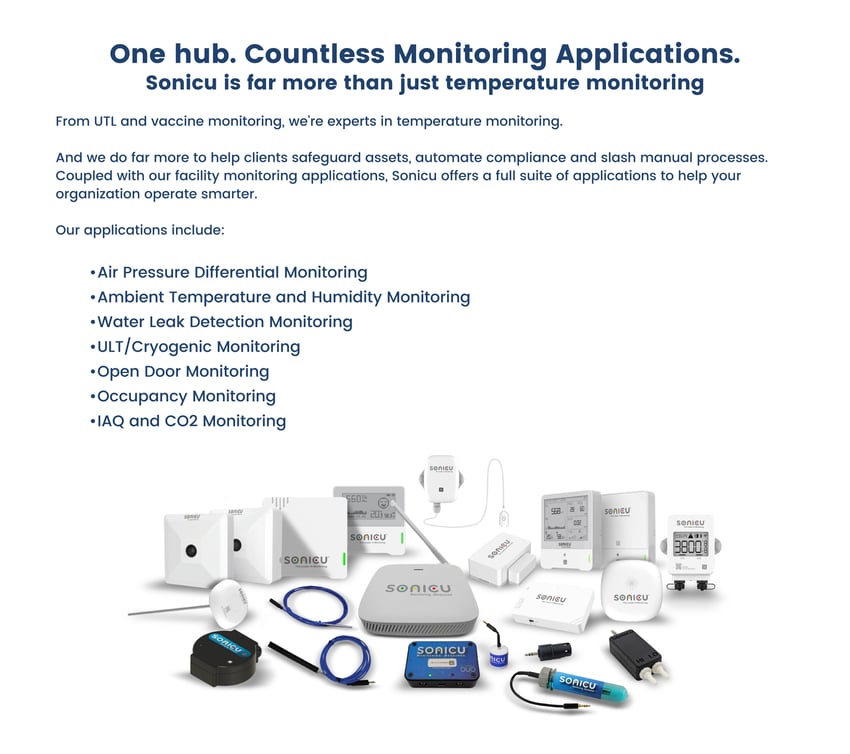
Cost competitiveness, great customer service, great control over the monitoring system, and low maintenance. You can't beat that.
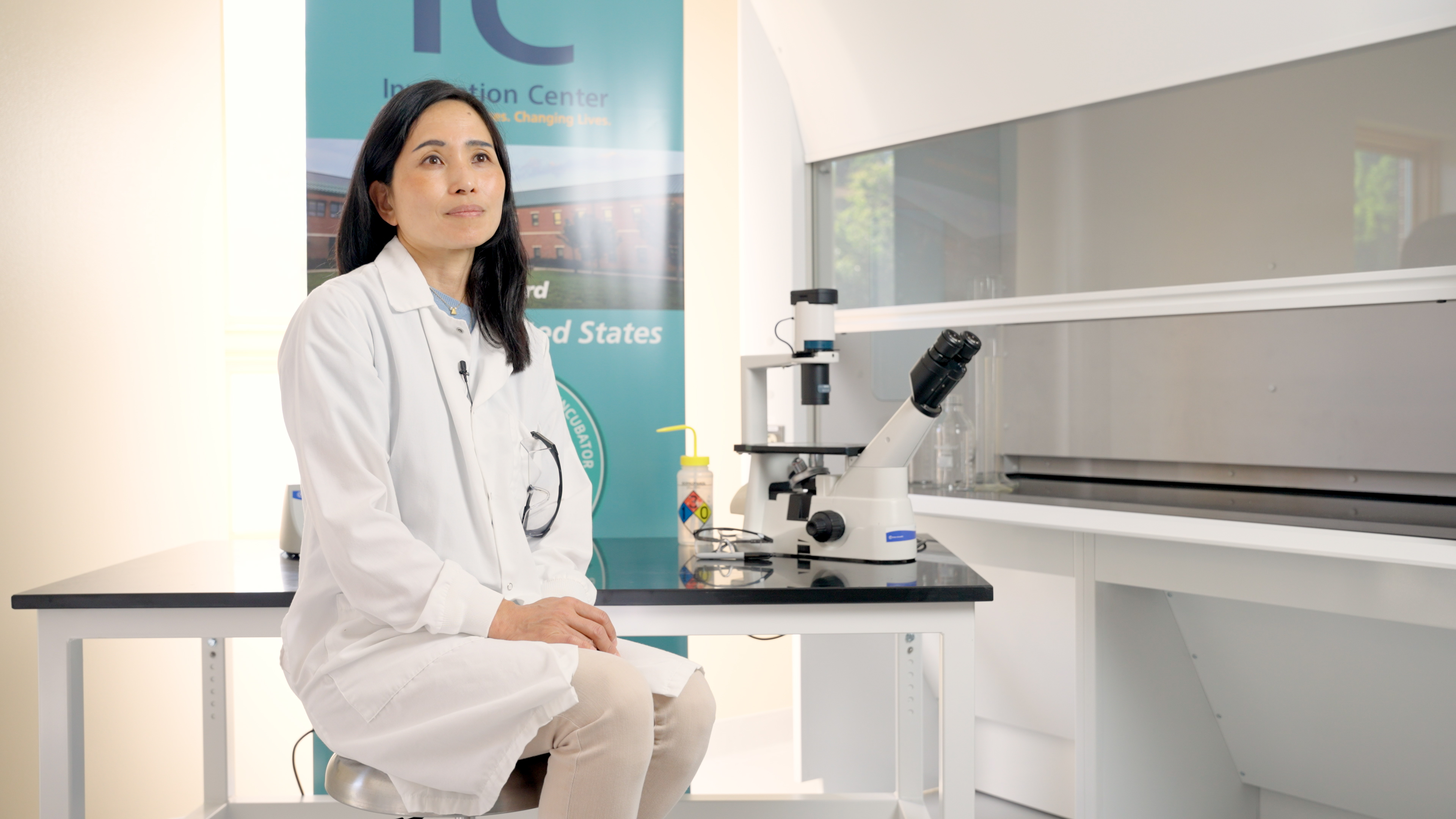
Sonicu costs are considerably more reasonable than our historic system, as well as other competitors on the market. The equipment is robust but simple to learn and utilize.

Having safe and secure storage provides reassurance that any future family building efforts will be protected. Sonicu gave us the ability to more easily put our head on the pillows and sleep easier at night knowing we had invested in a strong monitoring system.”


Revolutionizing Space Efficiency: How Occupancy Monitoring Technology Is Shaping the Future of Facilities Management
Occupancy monitoring technology refers to systems and solutions that are designed to detect, count, and monitor the presence and movement of people within a given space. This technology serves multiple purposes and can be integrated into various use cases across different industries.
Occupancy monitoring technology helps facility managers understand how space is used in real-time, which can inform resource allocation, layout design, and facilities management.
It is also used to control lighting, heating, ventilation, and air conditioning (HVAC) systems based on occupancy, reducing energy waste.
Occupancy monitoring technology can ensure that the number of people does not exceed the maximum capacity for safety reasons and compliance with fire codes and other regulations.
It can also help enhance security by monitoring the presence of individuals in sensitive areas.
Occupancy monitoring technology may be used to gather data on customer behaviors, which can be analyzed to improve service and personalize the customer experience.
It can also provide accurate data on the number and location of people in the event of an emergency, aiding in efficient evacuation and response.
When it comes to common use cases, office buildings use occupancy monitoring to manage space efficiently, reduce energy consumption, and enhance tenant comfort.
Retail stores apply this technology to track foot traffic and customer behavior patterns, helping in store layout optimization and staff allocation.
Hotels and entertainment venues use occupancy monitoring to improve guest experiences, manage energy costs, and ensure safety.
Airports and train stations use these systems to manage crowd density, enhance security, and improve passenger flow.
Hospitals and clinics monitor occupancy for infection control, resource management, and ensuring patient and staff safety.
Schools and universities use occupancy data to optimize room and resource usage and to improve energy efficiency.
Smart homes and cities can integrate occupancy monitoring to manage utilities and services more effectively and to improve the overall living experience.
Occupancy monitoring technologies can vary from simple manual counting to advanced systems using sensors, cameras, and artificial intelligence to provide real-time data and analytics.
Asset Protection. Compliance Automation. And Reduced Manual Processes. Sonicu serves thousands of professionals at hundreds of organizations across North America by improving how they monitor and manage their most sensitive assets and environments.
What components comprise occupancy monitoring technology and how do they perform their functions?
Occupancy monitoring technology comprises a variety of systems, each utilizing different methods and tools to perform its functions.
- Passive infrared sensors (PIR)
- These sensors detect the infrared radiation emitted by people.
- They are often used for controlling lighting or HVAC systems.
- They detect motion rather than the number of occupants, so they're better for detecting the presence or absence rather than counting.
- Ultrasonic sensors
- Ultrasonic sensors emit ultrasonic waves and measure the reflection off moving or stationary objects.
- They can detect occupancy by changes in the reflected pattern and are often used in combination with PIR sensors to improve accuracy.
- Video cameras with image recognition
- Advanced image processing and machine learning algorithms can count and track individuals within a camera's field of view.
- They can analyze patterns of movement and even identify specific behaviors. Privacy can be a concern, so such systems often process imagery in real-time without storing images.
- Wi-Fi tracking
- Wi-Fi tracking uses the signals from smartphones and other Wi-Fi-enabled devices to determine occupancy.
- By measuring the strength and origin of a signal, it can estimate the location and movement of devices within a space.
- Infrared beams
- These systems consist of an emitter and receiver, forming an invisible beam across an entrance or exit point. When someone passes and breaks the beam, the system registers it.
- This method is good for counting entries and exits but less effective at monitoring specific occupancy levels within an area.
- Thermal sensors
- Thermal sensors detect heat patterns and can differentiate between inanimate objects and people due to temperature differences.
- They can be particularly useful in low-light environments.
- Mat sensors
- Pressure-sensitive mats can detect when someone steps on them, typically used at entry points or specific locations where occupancy monitoring is required.
- Acoustic sensors
- These sensors use noise levels to infer occupancy.
- Advanced systems can distinguish between different types of sounds to estimate the number of people and activity levels.
- CO2 sensors
- Because each person exhales carbon dioxide, CO2 sensors can estimate the number of people in a space based on CO2 concentration.
- This method works better in sealed environments and may require calibration to account for baseline levels.
- Combination sensors
- In complex environments, a combination of the above sensors might be used to improve accuracy and reliability.
- For instance, PIR sensors could be used in conjunction with CO2 sensors for both immediate occupancy detection and an estimate of sustained occupancy levels over time.
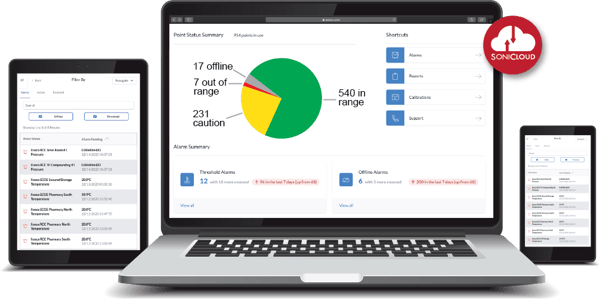
Here are the tasks the system must perform to accomplish its goals:
- Detection
- Occupancy monitoring systems first detect the presence of people.
- This can be direct, through visual identification via cameras, or indirect, such as sensing CO2 levels.
- Counting
- Some systems, particularly video-based and infrared beam systems, count the number of occupants by tracking the number of people entering and exiting.
- Monitoring
- The continuous tracking of occupancy levels over time, allows for patterns to be observed and analyzed.
- Data processing
- The raw data from sensors are processed using algorithms to interpret the information meaningfully.
- This might involve counting individuals, determining their location, or even predicting their movements.
- Action
- Finally, the processed data is used to trigger actions, such as turning off lights in an unoccupied room, adjusting HVAC systems, sending alerts, or informing business decisions.
Privacy and accuracy are two significant challenges in occupancy monitoring technology. Advanced systems are being developed to address these challenges, using techniques like edge computing to process data locally and ensure personal data is not stored or transmitted unnecessarily. Other systems transmit data to secure cloud services that provide peace of mind for sensitive data.
Easy to install and configure and supported by live American-based phone support, Sonicu is the most affordable, intuitive, and trusted temperature and environmental monitoring solution nationwide.
What industry pain points can occupancy monitoring technology effectively resolve?
Occupancy monitoring technology addresses several pain points across various industries, often contributing to cost savings, efficiency improvements, and enhanced user experiences.
First, buildings consume energy for heating, cooling, and lighting, even when spaces are unoccupied, leading to significant energy waste. Occupancy sensors can automate the control of HVAC and lighting systems, ensuring that energy is used only when necessary, thereby reducing waste and saving costs.
Inefficient use of space can also lead to higher real estate costs, as organizations may rent or maintain more space than necessary. Data from occupancy monitoring can inform decisions about space utilization, allowing for the downsizing or repurposing of underused areas.
There are strict regulations regarding maximum occupancy for safety reasons, which can be challenging to monitor manually. Real-time occupancy data ensures compliance with safety regulations by alerting when the number of people exceeds the set threshold, thereby avoiding potential fines and legal issues.
Overcrowding can also negatively impact the customer experience in retail spaces, event venues, and transportation hubs. Occupancy monitoring can manage customer flow and reduce wait times by providing data that can be used to open new checkouts, change staff allocations, or guide crowd management decisions.
During emergencies, not knowing the exact number of people and their location can also hamper rescue operations. Accurate occupancy information can be critical for emergency response, guiding evacuation procedures and ensuring that everyone is accounted for.
In the context of a pandemic, maintaining social distancing and limiting occupancy can also be essential to control the spread of infection. Monitoring and controlling the number of people in a space helps maintain safe occupancy levels and assist in contact tracing if necessary.
Staffing levels that do not match occupancy levels can also lead to either unnecessary labor costs or inadequate service delivery. Occupancy data can inform staffing decisions, ensuring that the number of staff aligns with actual demand.
Fixed cleaning schedules might not reflect actual usage patterns, leading to either wasted effort in low-use areas or insufficient cleaning in high-traffic areas. By understanding which areas are used most frequently, cleaning and maintenance can be scheduled more effectively.
Lastly, ensuring that sensitive or restricted areas are accessed only by authorized personnel can be challenging. Occupancy sensors can alert security personnel when people enter restricted areas, enhancing overall security.
These pain points illustrate why occupancy monitoring technology is valuable across different sectors. It helps in automating processes, optimizing resources, enhancing safety, and improving the experiences of occupants, all of which contribute to the overall effectiveness and sustainability of operations.
From automating complex and tedious regulatory reports to significantly reducing time spent on manual processes, Sonicu helps private, public, and government agencies focus on their core business and less time on monitoring their assets and environments.
Key benefits of occupancy monitoring technology
- By managing lighting, heating, and cooling based on actual usage, significant energy savings can be achieved.
- Lower utility bills and reduced need for physical oversight translate into financial savings.
- Provides insights into how space is used, allowing for optimization and potentially reducing the need for larger, more expensive premises.
- Helps in emergency situations by providing accurate counts of people for efficient evacuation and can ensure compliance with occupancy regulations.
- Creates a more responsive environment that adjusts to the presence of occupants, enhancing comfort levels.
- Generates valuable data that can inform strategic decisions regarding facility management and design.
- Can trigger actions such as lighting, temperature control, and even security measures automatically.
- Automates the counting and monitoring processes, reducing the likelihood of errors associated with manual methods.
- By reducing energy consumption, it supports broader environmental sustainability objectives.
Step into the Future with Sonicu: Transform Your Space with Smart Occupancy Solutions
In wrapping up our insightful journey through the landscape of occupancy monitoring technology, we've navigated the contours of energy conservation, space optimization, and the multifaceted ways in which this innovative technology can streamline operations across various industries. It's clear that the intelligent application of occupancy monitoring systems is not just a fleeting trend; it's an essential keystone in the arch of modern, efficient, and responsive facility management.
The advantages of adopting such systems are as robust as they are varied – from the tangible rewards of reduced energy bills and the eco-friendly nod to sustainability, to the intangible yet priceless peace of mind that comes with enhanced safety and security measures. Like a master conductor leading a symphony of automated controls, Sonicu's occupancy monitoring technology orchestrates your building's operations with precision and grace, ensuring that every resource is utilized to its fullest potential, without the wasteful expense of unnecessary utility use.
So, as we draw the curtains on this discussion, the question isn't whether occupancy monitoring technology is worth the investment; it's whether you can afford to lag behind in a world where efficiency, sustainability, and security are not just desired but demanded by a forward-thinking clientele.
Don't let your facilities fall into the annals of obsolescence. Embrace the future with Sonicu's occupancy monitoring solutions and unlock the full potential of your space. Visit our website to discover how our technology can revolutionize your operations and put you at the forefront of innovation and cost-efficiency.
Let Sonicu be the cornerstone of your smart building strategy – because when your spaces are intelligent, every square inch counts. Contact us today and step into the future of facility management.
American-based Customer Support: Robust & Reliable High Touch Service
Software and technology is only as good as the people who stand behind it.
At Sonicu, that means our team of American-based customer success managers who are never more than a phone call away to help field and fix any service issues.
Our probes and sensors are placed in demanding frozen environments and our software literally sends billions bits of data monthly, meaning there’s always the potential for a hiccup on either the hardware or software.
We are committed to fielding every customer service request promptly and addressing our customer’s concerns promptly and professionally.
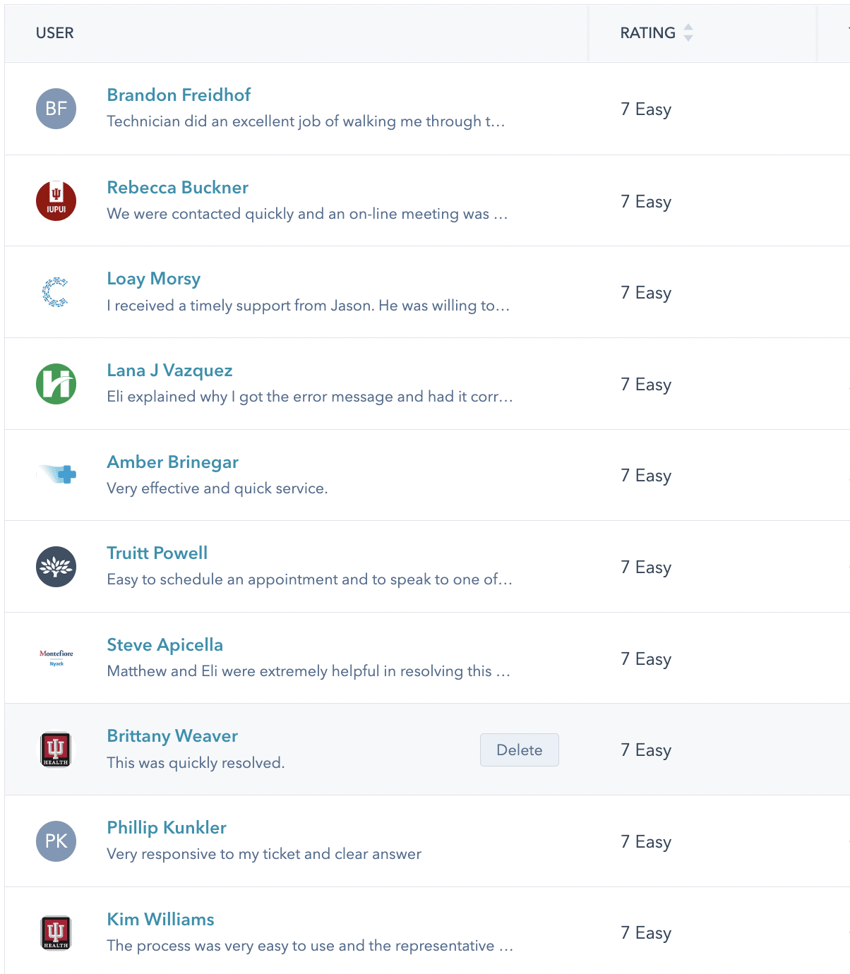
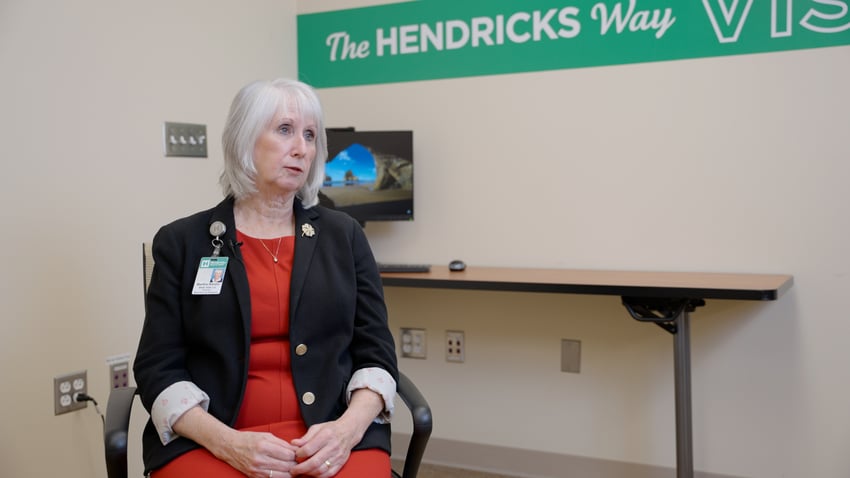 “I like to say that every refrigerator or freezer is like a car in that they all behave a bit differently,
“I like to say that every refrigerator or freezer is like a car in that they all behave a bit differently,
and then every now and then you just get a bad boy who doesn’t want to perform as we need it to,”
Martha Rardin, Director, Nutrition and Dietetics, Hendricks Regional Hospital.
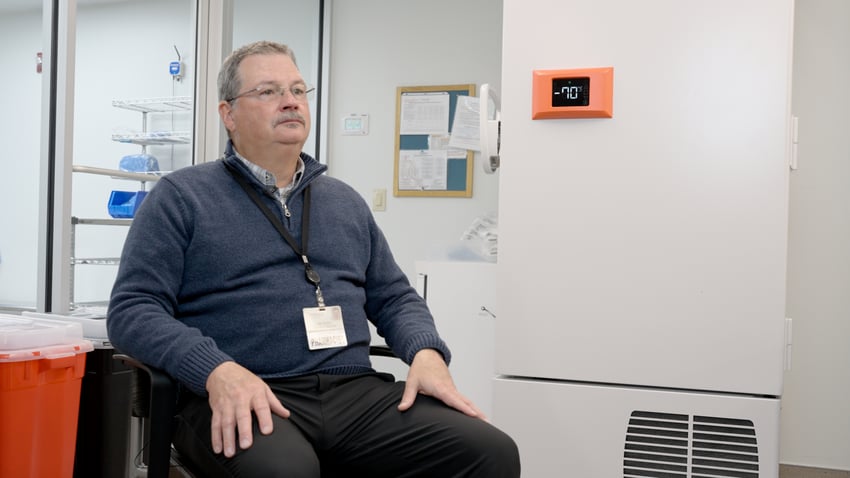 “Sonicu has been a powerful tool to identify which units are behaving out of spec and get our team
“Sonicu has been a powerful tool to identify which units are behaving out of spec and get our team
to fix them before we have a serious issue.”
Tim Livesay, Director, Hancock Regional Hospital Pharmacy Director


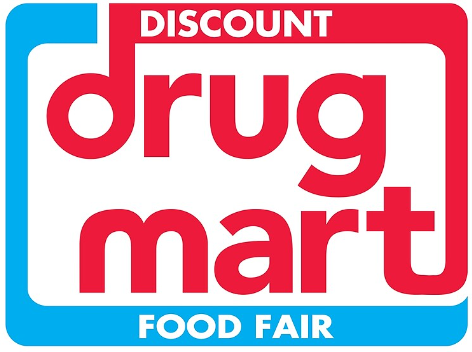
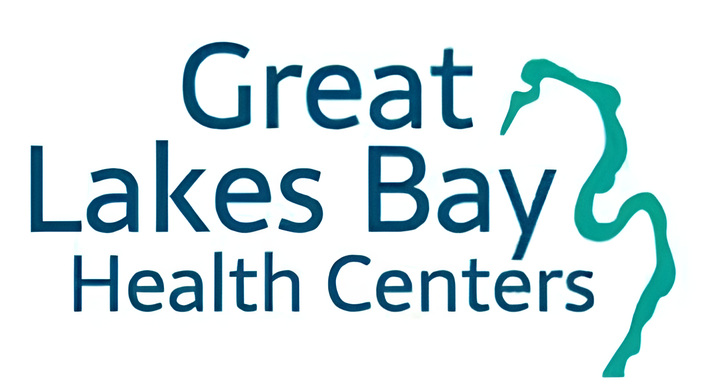

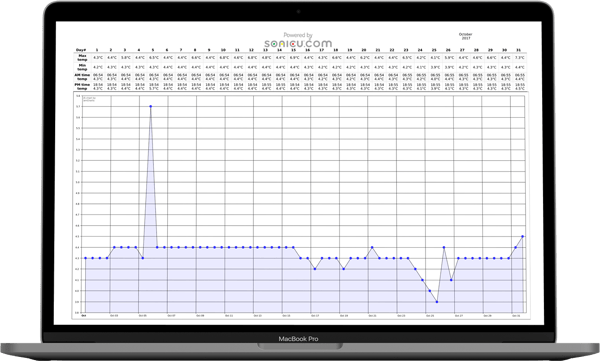
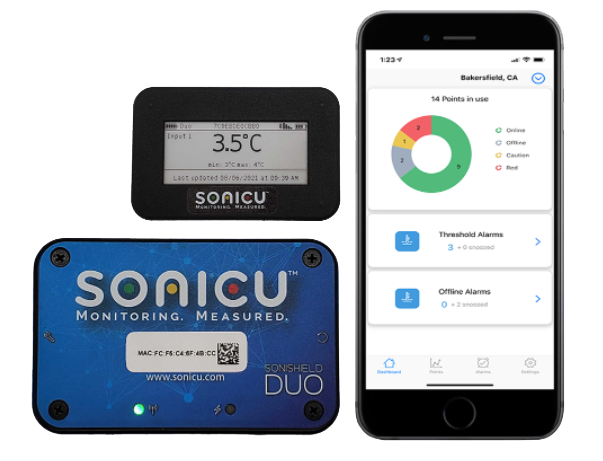
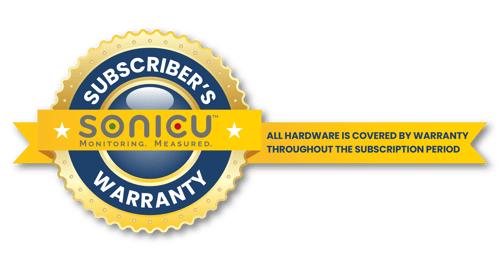


How IU Health
consolidated all of its pharmacy monitoring needs
into one cloud-based platform serving dozen of locations.